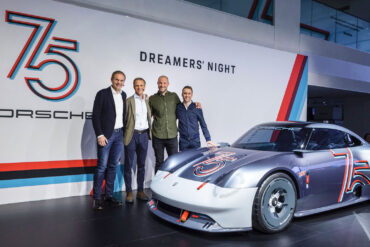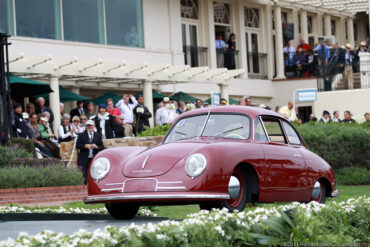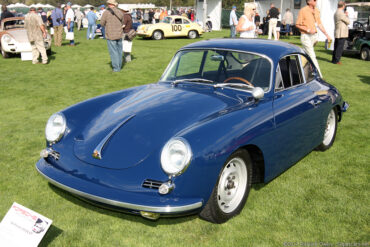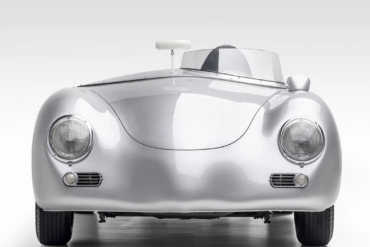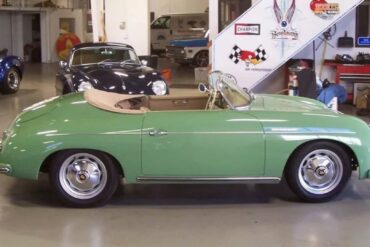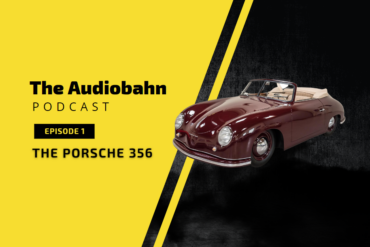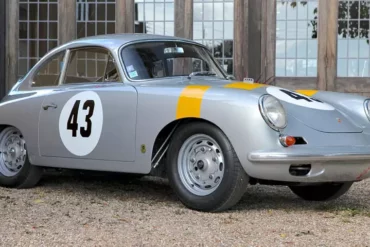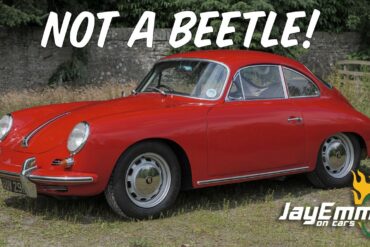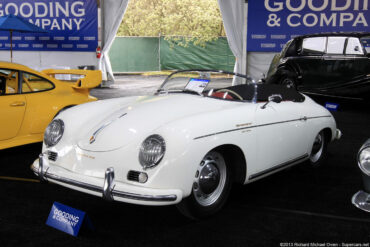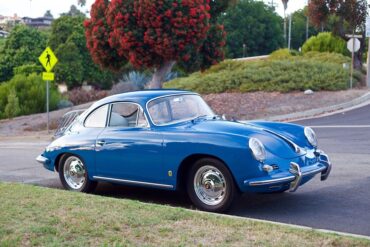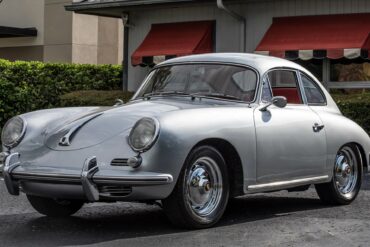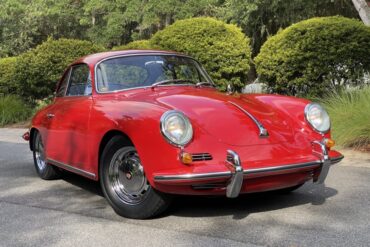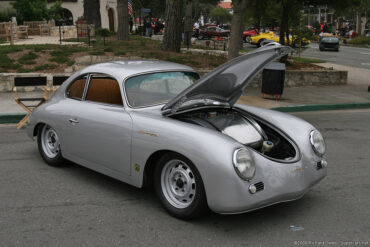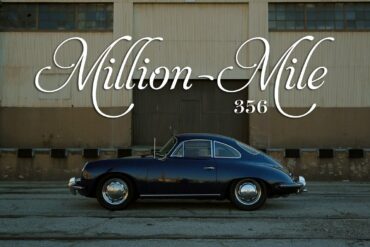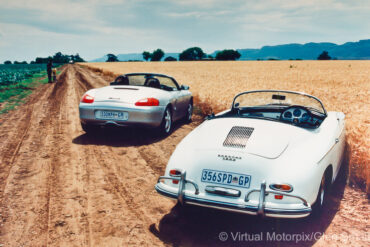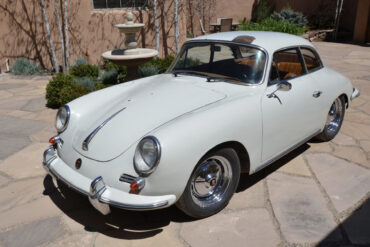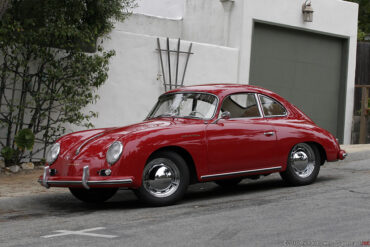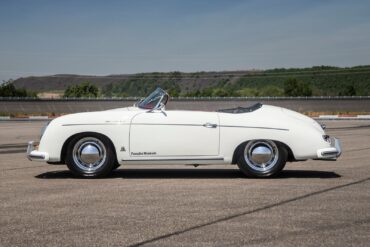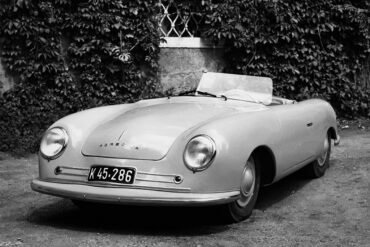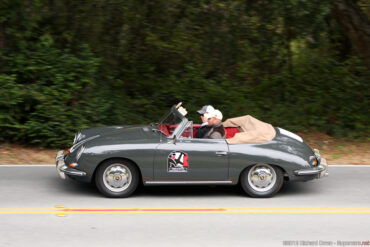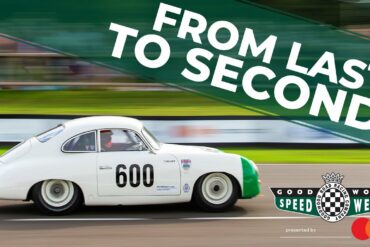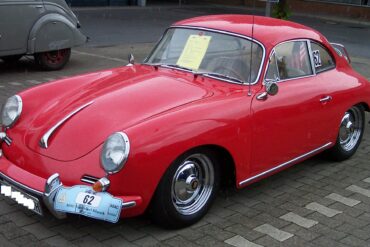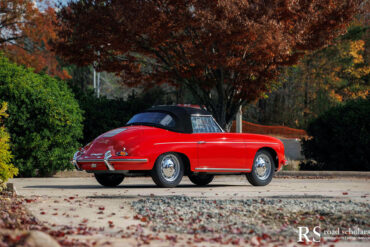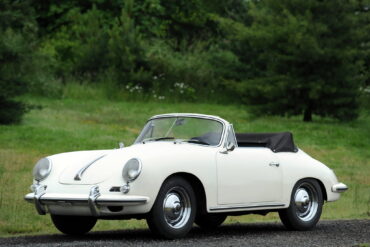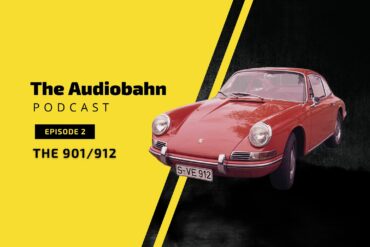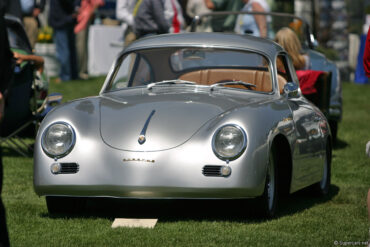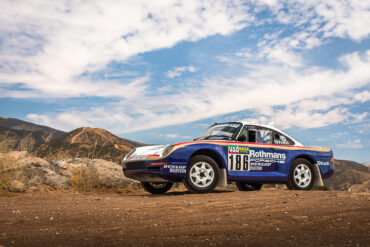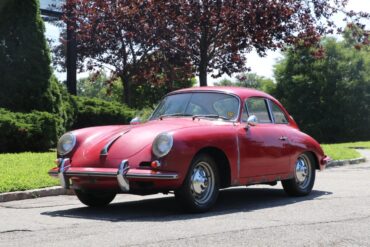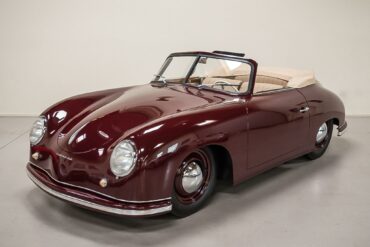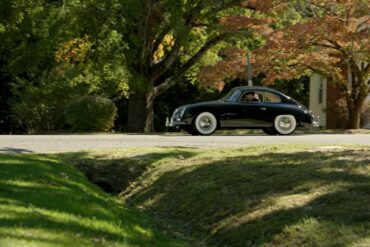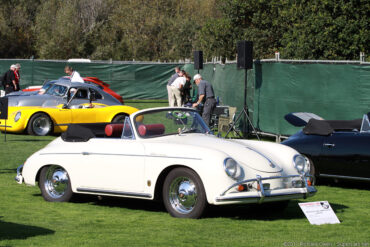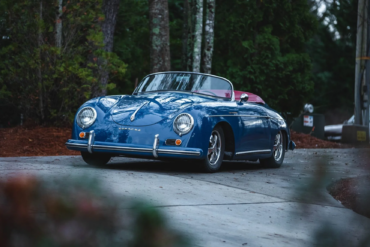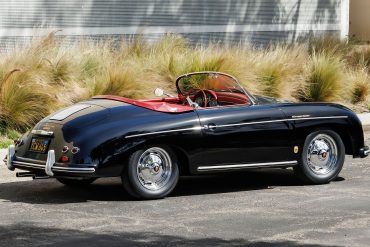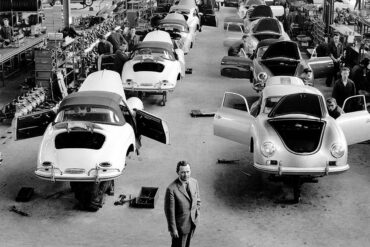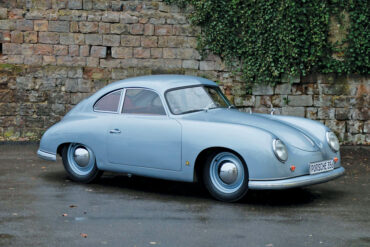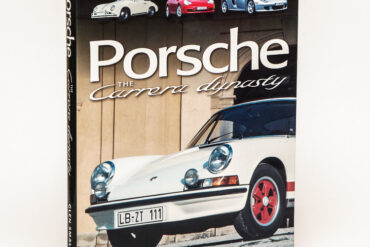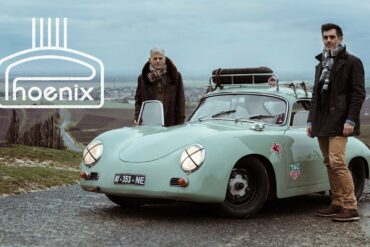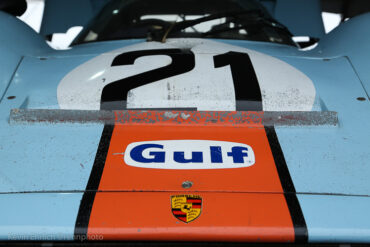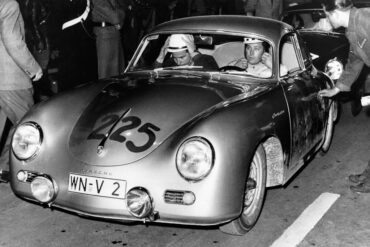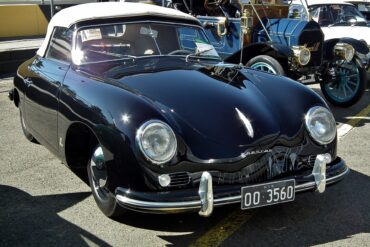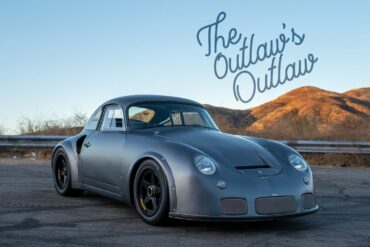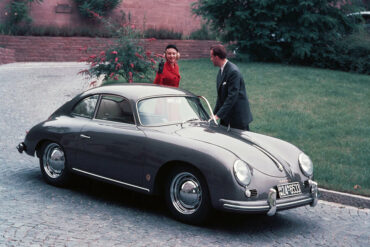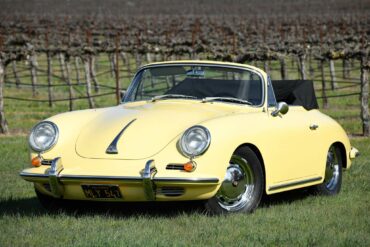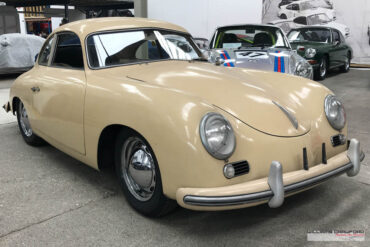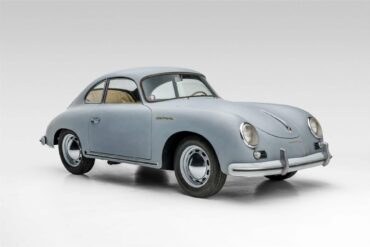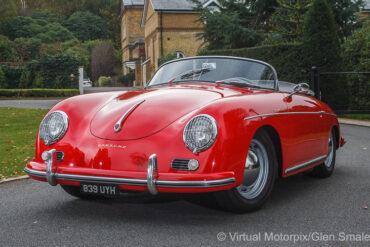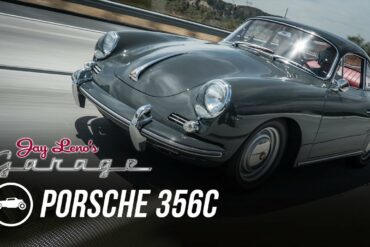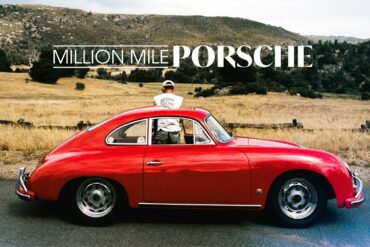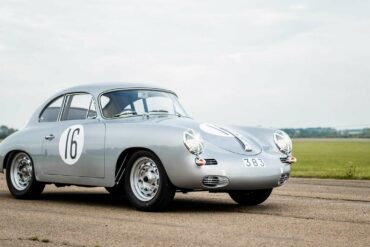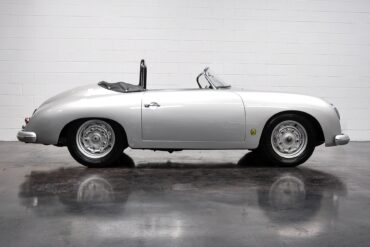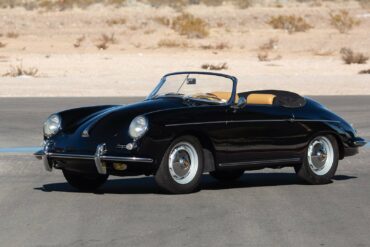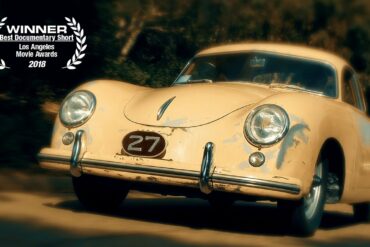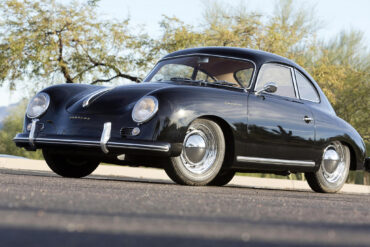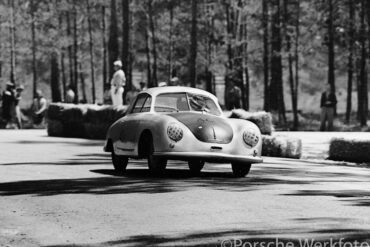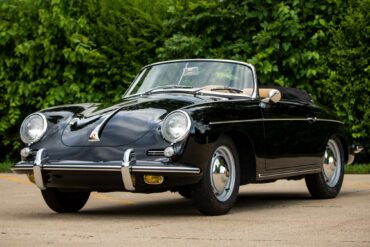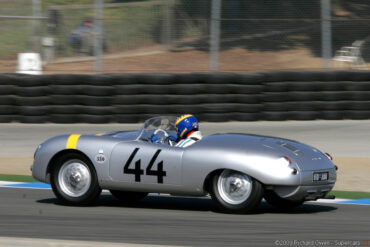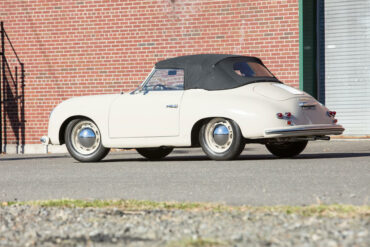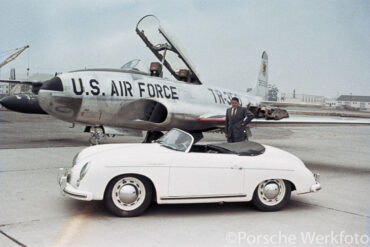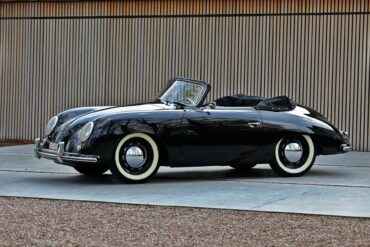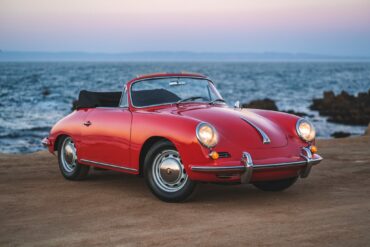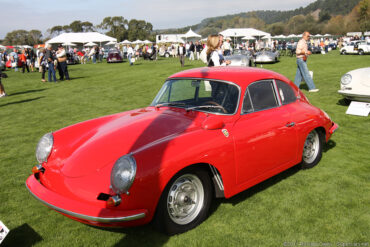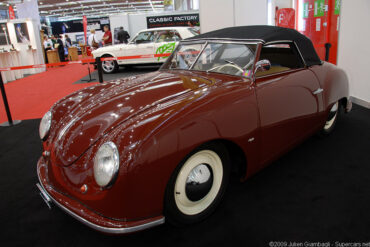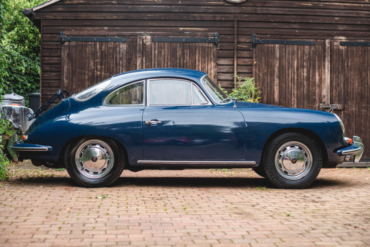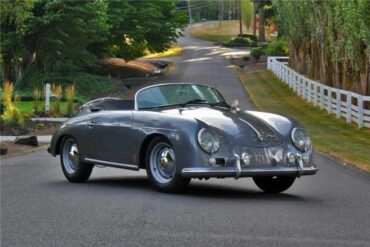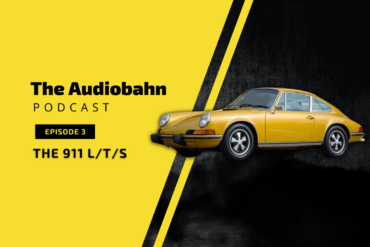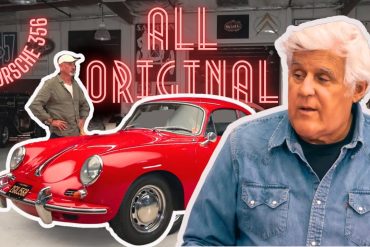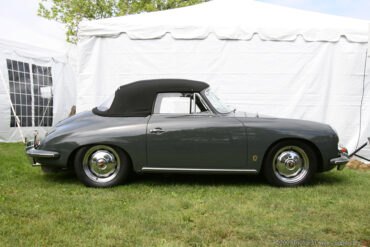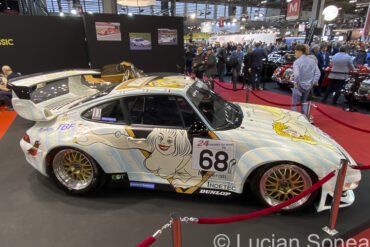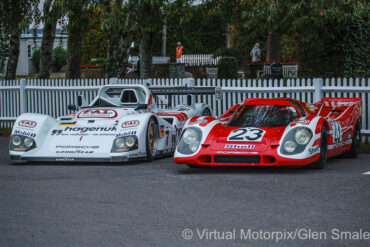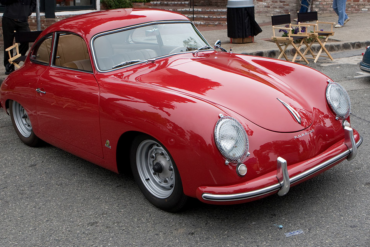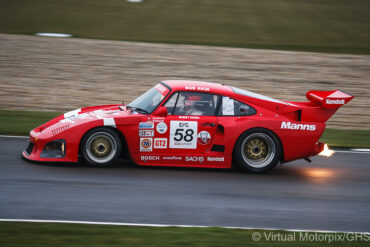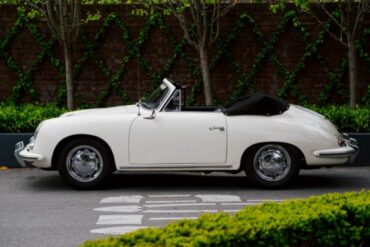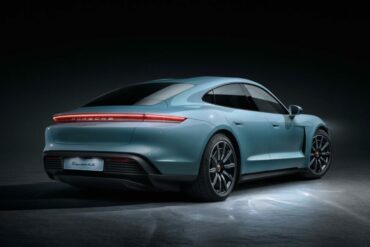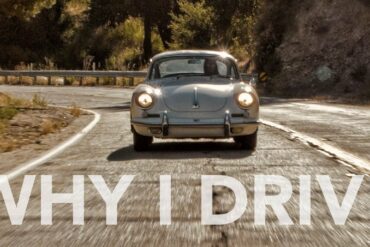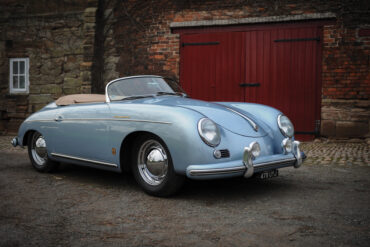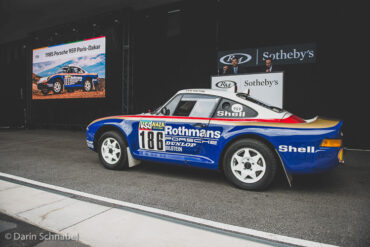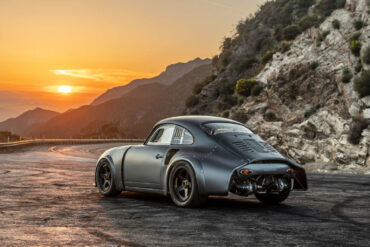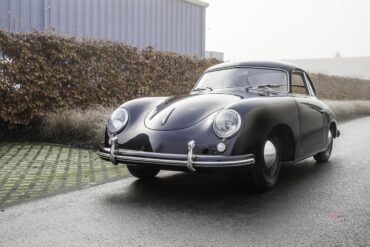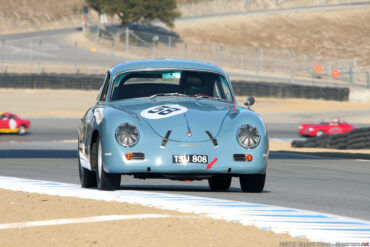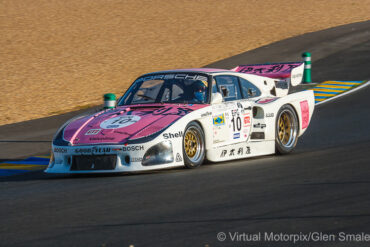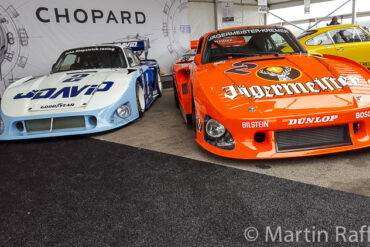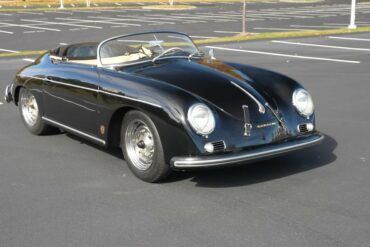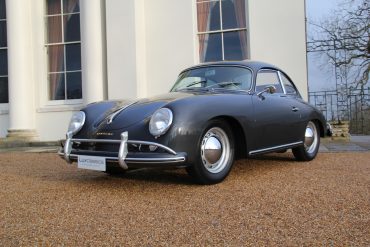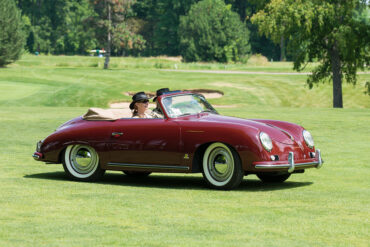Celebrating the birth of a legendary brand In 1948, Ferry Porsche realized his dream of a sports car: with his...
Porsche 356/2 Gmünd Coupé Specifications type Series Production Car production years 1948 – 1951 built at Austria production 41 price...
1964 Porsche 356C/2000GS Carrera 2 Coupe Technical Specifications Model Years 1964 Built At Stuttgart, Germany Engine 2.0 L Aircooled Flat...
It’s really hard not to love this Porsche 356 A Carrera Speedster! Photo Credit: Ted7 (@iamted7)...
1956 – 1957 Porsche 356A/1300 Speedster Technical Specifications WHAT BODY STYLE? 2 door fixed-head coupé with 2+2 seats HOW LONG?...
Episode One: The Porsche 356 Summary Welcome to The Audiobahn, the Stuttcars.com podcast focused on all things Porsche. In our first...
Around 20 Super 90 Coupes were ordered with the lightweight GT package for racing. They used aluminum panels, a lightweight interior and plexiglas windows to shed over 200 lbs off the standard production coupe. Inside the car came equipped with a roll bar, leather-strap window lifts and speedster seats. Aluminum exterior panels included the doors, hood, rear deck lid.
Porsche 356C Driven In today’s video, we don’t learn much – but we do get to see me go rather...
1956 – 1958 Porsche 356A/1500GS Carrera Speedster Pictures & Gallery...
1959 – 1963 Porsche 356B/1600 S Coupe Technical Specifications Type Series Production Car Production Years 1959 – 1963 Built At...
PCarMarket is currently offering a 1960 Porsche 356B Sunroof Coupe that has been restored by its previous owner before it...
1964 – 1965 Porsche 356 C 1600C Coupe Technical Specifications Model Years 1964 – 1965 Built At Stuttgart, Germany Engine...
1957 – 1958 Porsche 356A/1500GS Carrera GT Coupé Pictures & Gallery...
This is what it is all about It takes a lot of driving, work, and a little bit of luck...
A 1997 Porsche Boxster (left) and a 1958 Porsche 356 A Speedster (right) The day dawned bright and clear with...
1961 – 1963 Porsche 356B/1600 Super 90 Notchback Coupe Pictures & Gallery...
1956 – 1959 Porsche 356A/1500GS Carrera Coupe Pictures & Gallery...
Porsche 356 Production & Chassis Numbers (1950 – 1965) The evolution of the 356 was constant throughout its production history....
Porsche 356/1 Pictures Today we call the first mid-engined Porsche roadster as 356/1 (or 356 no. 1) to distinguish it...
1964 – 1965 Porsche 356 C 1600C Cabriolet Pictures & Gallery...
8 minutes of Porsche 356 goodness British Touring Car runner-up Sam Tordoff had quite the time in the Fordwater Trophy...
1956 – 1959 Porsche 356A/1600 Super Coupe Technical Specifications Model Year 1956 – 1959 Built At Stuttgart, Germany Body Stylist...
Reviewed and Edited by Rex McAfee Impeccable numbers matching 356B S90 Roadster In 1959, Porsche introduced a complete update of...
1959 – 1963 Porsche 356B/1600 Super 90 Cabriolet Pictures & Gallery ...
Episode Two: The Porsche 901/912 Summary Welcome to The Audiobahn, the Stuttcars.com podcast focused on all things Porsche. In our first...
Following the Pre-A prototypes and a run of quad-cams with the 1500cc engine, the 1600 Carrera GT was a performance 356 that used a larger version of the Porsche 550 Spyder's potent engine. As early as 1958, some Carreras were fitted with a larger engine known as the Type 692. The new unit featured a larger displacement which was better suited for the 1600cc class. Furthermore, it was improved considerably adopting plain bearings and new ignition system.
Porsche 911s on track at the Porsche Experience Centre Atlanta (Courtesy of the Porsche Experience Centre Atlanta) RM Sotheby’s, in...
1961 – 1963 Porsche 356B/1600 Super 90 Notchback Coupe Technical Specifications Type Series Production Car Production Years 1961 – 1963...
1950 – 1951 Porsche 356/1100 Split-Window Cabriolet (Pre-A) Technical Specifications Type Series Production Car Production Years 1950 – 1951 Built...
Join Road Scholars’ Cam Ingram and Udo Reisinger as they take the 1958 Porsche 356A Coupe on its final post...
1956 – 1959 Porsche 356A/1500GS Carrera Cabriolet Pictures & Gallery...
Live now on Bring A Trailer is fantastic example of a 1955 Porsche 356 Speedster finished in Oslo Blue over...
While the staff here at Stuttcars can never get enough of Porsche’s latest GT3s and 963 prototypes, there’s true reverence...
The world of early Porsche production This footage was taken between late 1959 and late 1961. Great view into the...
1951 – 1953 Porsche 356/1300 Split-Window Coupe (Pre-A) Technical Specifications Type Series Production Car Production Years 1951 – 1953 Built...
Porsche: The Carrera Dynasty by Glen Smale © Glen Smale A Spanish noun, ‘carrera’ can mean road, track or race...
The Auratium Green 356 A Type 2 Please turn on Closed Captions to enjoy this film in English. This is...
Gulf Porsche chassis 917-016 Under the welcoming embrace of sunny California skies over wine country, the Sonoma Speed Festival established...
In May of 1957, Porsche offered two distinct versions of the Carrera, one called the de Luxe for the street and this model, the Gran Turismo, for the track. The main difference between the two models was weight. The Carrera GT was a purpose-built car with little on board amenities. For instance, no heater was fitted giving the car its 'icebox' nickname. Furthermore, the interior was stripped of sound deadening, side windows were replaced by pull-up Perspex units and only simple door panels were fitted.
In 1953, the 1300 S or "Super" was introduced, and the 1,100 cc engine was dropped. The 360 1300 Super boasts a power improvement to 60 BHP with Porsche's "Super" engine in the Porsche 356 model range. Minor visual differences were implemented such as front indicators integrated with the horn grilles and bumpers protrude from the body with over-riders. In June 1954, the plain-bearing 1300cc engine switched over to the same block as the 4cc larger roller-bearing variant.
They call it the 356 RSR Rod Emory’s parents brought him home from the hospital in a hot-rodded short wheelbase...
Porsche 356 Spare Parts Catalogs (1950 – 1959 Model Year) Porsche 356/356A Parts These official Porsche PET Diagrams and codes for...
1964 – 1965 Porsche 356 SC Cabriolet Technical Specifications Model Years 1964 – 1965 Built At Stuttgart, Germany Engine Flat-4...
1954 – 1955 Porsche 356/1300 Split-Window Coupe (Pre-A) Pictures & Gallery...
1956 – 1958 Porsche 356A/1500GS Carrera Coupe Technical Specifications Type Series Production Car Built At Germany Coachbuilder Reutter Karosserie Price $...
1957 Porsche 356 A Speedster – looking chocolate box pretty! It was Max Hoffman, the New York-based Porsche importer, who...
The Outlaws Third generation SoCal gearhead Rod Emory takes Jay through his 1958 Emory Special and 1959 Emory Outlaw....
This is no ordinary Porsche “I’ve had so many great times in it, all over the world. Even the Eskimos...
While all 356 Carreras are rare and desirable cars, the 1961 B Carrera GT is a very special animal indeed. Built from lightweight materials and sporting Porsche’s most powerful racing engine of the time, they were in a different league to the most highly specified road car that the Stuttgart factory then produced. Porsche produced only 49 of the 356B Carrera versions for 1960/61 and all were coupes. Many were painted Silver.
1956 – 1958 Porsche 356A/1500GS Carrera Speedster Technical Specifications Type Series Production Car Built At Germany Coachbuilder Reutter Karosserie Price...
1959 – 1963 Porsche 356B/1600 S Roadster Technical Specifications Type Series Production Car Production Years 1959 – 1963 Built At...
1953 Porsche 356 America After decades collecting dust in a storage building in the California desert, a 1953 Porsche 356...
The Porsche 356 was the first production car from Porsche. Earlier cars designed by the company included Cisitalia Grand Prix...
Porsche 356 SL bodies lined up in the Reutter workshop (Werk 2) in 1951. This facility was used as the...
1959 – 1963 Porsche 356B/1600 S Roadster Pictures & Gallery...
1952 Porsche-Glöckler 356 Roadster Pictures & Gallery...
1952 – 1954 Porsche 356/1100 Cabriolet (Pre-A) Technical Specifications Type Series Production Car Production Years 1952 – 1954 Built At...
Porsche 356 Cabriolet competing at an aerodrome race in the USA, ca. 1952/1953 America has for decades been Porsche’s biggest...
1953 – 1955 Porsche 356/1500 Super Cabriolet (Pre-A) Pictures & Gallery...
1964 – 1965 Porsche 356 SC Cabriolet Pictures & Gallery ...
1960 – 1961 Porsche 356B/1600 Super 90 GT Coupe Pictures & Gallery...
Porsche 356/2 Gmünd Cabriolet Specifications type Series Production Car production years 1948 – 1951 built at Austria production 41 price...
1964 – 1965 Porsche 356 SC Coupe Pictures & Gallery ...
1956 – 1957 Porsche 356A/1300 Super Speedster Technical Specifications WHAT BODY STYLE? 2 door fixed-head coupé with 2+2 seats HOW...
Episode Three: The Porsche 911 T, 911 L, & 911 S Summary Welcome to The Audiobahn, the Stuttcars.com podcast focused on...
Porsche Racing Royalty Jay meets Rod Emory of Emory Motorsports to hear the story of the restorations of this remarkable...
Porsche is most renowned for the 911, but it was the 356 that first established the German brand’s reputation. In...
1962 – 1963 Porsche 356B/2000GS Carrera 2 Cabriolet Technical Specifications Type Series Production Car Built At Germany Engine Type 548...
1973 Porsche 911 Carrera RS 2.7 Lightweight presented by Serge Heitz Automobile Between 5th and 9th February, the Porte de...
(From L-R) 1995 Porsche WSC-95 in which Tom Kristensen registered his first Le Mans win (1997) and the first Porsche...
1953 – 1955 Porsche 356/1500 Super Coupe (Pre-A) Technical Specifications Type Series Production Car Production Years 1953 – 1955 Built...
Goodwood 76th Members’ Meeting, 17/18 March 2018: #58 Porsche 935 K3 (1980) driven by Urs Beck in the Group 5...
1964 – 1965 Porsche 356 C 1600C Cabriolet Technical Specifications Model Years 1964 – 1965 Built At Stuttgart, Germany Engine...
One of the Best ‘Outlaws’ on the Planet Emory Motorsports is a company that makes the best Porsche “Outlaw” cars....
We Love This 1964 Porsche 356 Why does Catherine Sutton drive? Because looking after her car is a choice, not...
1954 – 1955 Porsche 356/1500 Speedster Pictures & Gallery...
1985 Porsche 959 Paris-Dakar – chassis #WP0ZZZ93ZFS010015 (courtesy of RM Sotheby’s) Lot #196, the 1985 Porsche 959 Paris-Dakar, outstripped its...
Want to Join the Outlaw Gang? Rod Emory makes some of the most insane modified Porsches out there. This Porsche...
1952 – 1954 Porsche 356/1100 Coupe (Pre-A) Pictures & Gallery...
1958 – 1959 Porsche 356A/1600GS Carrera GT Coupé Pictures & Gallery...
Rennsport Reunion poster collection, from Rennsport I through VI It’s hard to know where to begin when writing a report...
Join Tedward as he gives the features of the 1957 Porsche 356 Speedster, and take out this very beautiful car...
From the outside, the 356A kept to the Porsche mantra of stepwise evolution. The new model was outwardly identical to the previous version except for the wider tires, a small rub-strip below the doors, a fully-curved front window and enamel paint replacing lacquer previously used. The 356 A came with an all-alloy air-cooled Flat 4 engine in four states of tune, with the 1300 having Type 589/2 engine with 60 bhp and 65 lb-ft of torque.
1955 Porsche 356/1500 Continental Cabriolet Pictures & Gallery...
No More Content


